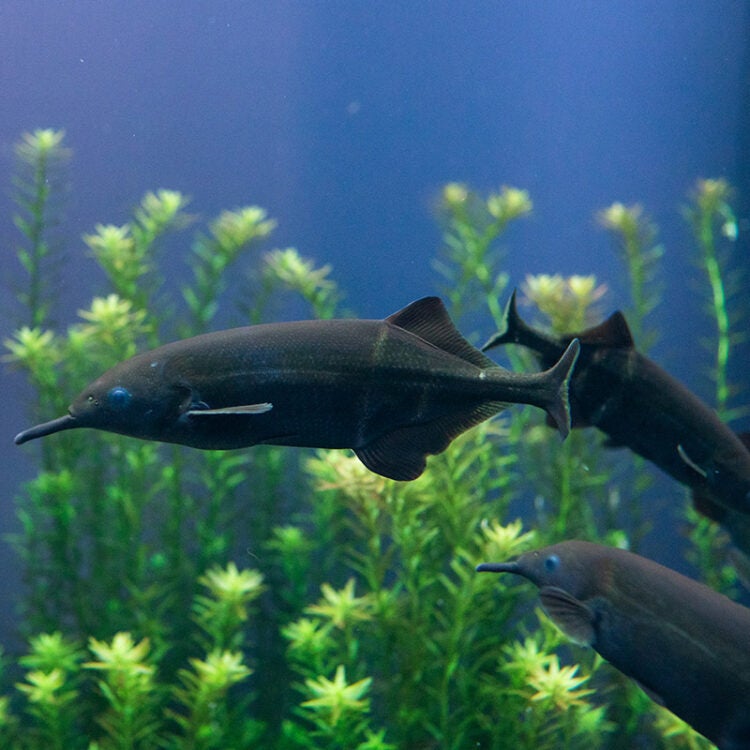-
Size
9 inches (23 cm) -
Diet
Worms and insects -
Range
Western Africa -
Habitat
Slow-moving waters in large rivers
Physical Characteristics
- The elephantnose fish is a slender, laterally compressed fish.
- It has a long chin barbel on its lower jaw, which is the basis for its name.
- This species is dark brown to black in color with two whitish bands at the beginning and middle dorsal and anal fins.
- The narrow caudal peduncle (base of tail) contains a weak electric organ.
- Electro-receptors are distributed over the entire head and the dorsal and ventral regions of the body but are absent from the sides and the caudal peduncle where the electric organ is located.
- The elephantnose fish can grow to about 14 inches (35 cm) in length, although around 9 inches (23 cm) is common.
Animal Fun Fact
The elephantnose fish is a social animal, usually occurring in large schools. There appears to be a complex social structure with this species.
Diet / Feeding
- Feeds mostly at night on worms and insects, probing for prey with its long barbel, possibly aided by its electro-sensory capability.
Range / Habitat
- Occurs in West Africa from the Niger to Congo river basins. It is limited in numbers in lower Niger, in the Ogun, in the Cross River basin and in the upper Chari.
- Usually found close to the bottom at depths of 16 to 62 feet (5-19 m).
- Habitat is not well known, but it is believed to prefer slow-moving waters in large rivers.
Reproduction & Growth
- Oviparous- female lays eggs that later hatch into fry.
- It is believed that spawning occurs during the rainy season. Not much is known about its reproductive biology.
Conservation Status
- “Least Concern” on the IUCN Red List.
Additional Information
- The elephantnose fish is a social animal, usually occurring in large schools. There appears to be a complex social structure with this species.
- The elephantnose fish is territorial and can be aggressive towards other elephantnose fish. This behavior involves electric organ discharge (EOD) activity.
- This species can hear sounds in the range of 100-2500 Hz, with best hearing demonstrated between 300-600 Hz.
- Another common name for this species is “Peter’s elephantnose”.







